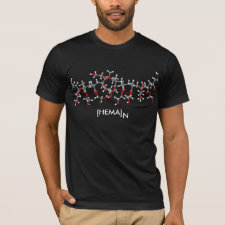
Authors: Wang CY, Javadi A, Ghaffari M, Gong SQ
Article Title: A pH-sensitive molecularly imprinted nanospheres/hydrogel composite as a coating for implantable biosensors.
Publication date: 2010
Journal: Biomaterials
Volume: 31
Issue: (18)
Page numbers: 4944-4951.
DOI: 10.1016/j.biomaterials.2010.02.073
Alternative URL: http://www.sciencedirect.com/science/article/B6TWB-4YP6SHR-9/2/2e521a51ba1fc66f4fd079e8c1f34cb1
Abstract: A pH-sensitive molecularly imprinted polymer (MIP) nanospheres/hydrogel composite exhibiting controlled release of dexamethasone-21 phosphate disodium (DXP) was developed as a potential coating for implantable biosensors to improve their biocompatibility. The molecularly imprinted pH-sensitive nanospheres were prepared by UV-initiated precipitation polymerization using DXP as the template molecule. The DXP loading and release experiments showed that the MIP nanospheres exhibited a higher loading level and slower release rate than non-imprinted polymer (NIP) nanospheres due to the interaction of DXP with the DXP-imprinted cavities within the MIP nanospheres. Furthermore, the MIP nanospheres exhibited a faster DXP release rate at a lower pH value within the pH range tested (i.e., 6.0-7.4), which is desirable for suppressing inflammation because inflammation induces an acidic microenvironment. In contrast, the NIP nanospheres did not show a notable pH-responsive DXP release behavior. The hydrogel poly(2-hydroxyethyl methacrylate (HEMA) -N-vinyl-2-pyrrolidinone (NVP) -2-methacryloyloxyethyl phosphorylcholine (MPC)) was prepared by UV polymerization. The MIP nanospheres were successfully incorporated into the hydrogel. The equilibrium water content and swelling kinetics of the MIP nanospheres/hydrogel composite were similar to those of pure hydrogel. The MIP nanospheres/hydrogel composite exhibited a much better controlled DXP release profile than the pure hydrogel. This pH-sensitive MIP nanospheres/hydrogel composite designed as a coating for implantable biosensors can potentially suppress the inflammation response of the implanted biosensors efficiently thereby effectively improving their lifetime
Template and target information: dexamethasone-21 phosphate disodium, DXP
Author keywords: Molecularly imprinted nanospheres, hydrogel, controlled release, composite



Join the Society for Molecular Imprinting

New items RSS feed
Sign-up for e-mail updates:
Choose between receiving an occasional newsletter or more frequent e-mail alerts.
Click here to go to the sign-up page.
Is your name elemental or peptidic? Enter your name and find out by clicking either of the buttons below!
Other products you may like:
 MIPdatabase
MIPdatabase









